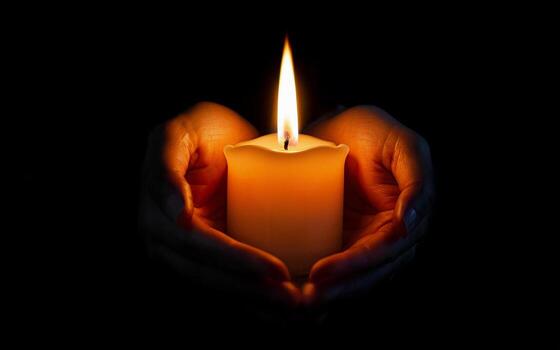The wrestling world is in mourning following the passing of one of its most unique and inspirational figures — a man whose legacy was built not only on physical strength, but on resilience, courage, and the power of perseverance in the face of profound adversity. The 1970s and 1980s saw the rise of countless colorful characters inside the squared circle, yet few captured hearts and inspired respect quite like the soft-spoken yet fiercely competitive Canadian known simply as “Silent.”
News of his death at the age of 77 was announced by Maple Leaf Pro, the Toronto-based organization that helped shape his early career and later immortalized him as one of the most beloved figures in Canadian wrestling history. The promotion confirmed the loss in a heartfelt statement shared on social media, writing, “Maple Leaf Pro is saddened to hear of the passing today of ‘Silent,’ a Maple Leaf Wrestling alumni and legend in Toronto. He was more than a journeyman — he won the hearts of fans and gained recognition across the world, competing in Japan with both New Japan Pro Wrestling and All Japan Pro Wrestling.”
Though the cause of death was not revealed, tributes from wrestlers, promoters, and longtime fans quickly poured in. Many recalled a man who, despite his inability to hear the roar of the crowd, somehow managed to connect more deeply with them than most performers of his generation.
For those who followed professional wrestling during the golden era of territorial promotions, “Silent” was a true standout. His calm demeanor, precise technique, and remarkable stamina made him a crowd favorite from Toronto to Tokyo. But his story transcended the ring — it was one of defying expectations, breaking barriers, and proving that disability need not define destiny.
Born in Ontario in 1948, he was diagnosed as profoundly deaf at a young age. Growing up in a time when accessibility and inclusivity were far from mainstream concepts, he faced an uphill battle. Communication was difficult, opportunities were limited, and the professional wrestling industry — dominated by bravado and loud personalities — seemed an unlikely destination. Yet, through sheer determination and an unyielding belief in his abilities, he turned what many saw as a limitation into his defining strength.
He trained under local coaches who recognized his athleticism and discipline. Fellow wrestlers have said that his silence brought an unusual intensity to the gym; every move, every motion was deliberate and exact. He developed an almost instinctive ability to read opponents’ body language — a skill that became one of his greatest assets in the ring.
By the early 1970s, “Silent” had begun to make waves in Canada’s regional wrestling scene. Fans were instantly drawn to his quiet confidence. While other performers shouted into microphones and taunted their rivals, he simply stood tall, communicating everything through his eyes and his actions. The absence of words made his persona mysterious, and that mystique helped him stand out in an era when spectacle was everything.

His success eventually took him beyond Canadian borders. In the mid-1970s, he was invited to compete in Japan — a move that would transform his career. Wrestling fans in Japan, known for their respect toward technical and disciplined athletes, immediately embraced him. He worked for both New Japan Pro Wrestling and All Japan Pro Wrestling, where his methodical style and respect for the sport’s traditions earned him the admiration of fans and peers alike.
Japanese newspapers at the time called him “The Quiet Gaijin,” a foreigner who let his wrestling speak for him. Despite the language barriers, he found a profound sense of belonging there. Matches against legends of the Japanese scene solidified his reputation as a serious competitor — not a novelty act, but a craftsman of the ring.
By the 1980s, “Silent” had built an impressive international résumé, including appearances in the United States where he worked briefly under the WWE banner. While he never held a major world title, his impact was felt in subtler but equally powerful ways. He became an inspiration to fans with disabilities and an advocate for inclusivity long before such conversations were common in sports entertainment.
When he entered the WWE circuit, many insiders initially doubted how a deaf wrestler could adapt to the fast-paced and theatrical style of American wrestling. But he quickly proved them wrong. He learned to synchronize with referees and opponents through visual cues and signals, and he never once asked for special treatment. As several of his peers later recalled, he could anticipate timing and crowd rhythm purely through observation and vibration — feeling the pulse of the arena rather than hearing it.
His matches were often hard-hitting but graceful, combining old-school grappling with dramatic storytelling. In an industry built on noise — from roaring crowds to trash-talking promos — his silence became his greatest weapon. Fans didn’t need to hear him speak; they felt every emotion in his performance.
After nearly three decades in the business, he retired from professional wrestling in the late 1990s. Though his days in the ring were over, he continued to contribute behind the scenes, mentoring younger athletes and occasionally appearing at fan conventions and charity events. Those who met him described him as humble, generous, and patient — always willing to share his experiences and encourage others facing adversity.
One of his protégés once said, “He taught me that wrestling isn’t about who yells the loudest — it’s about who makes people feel something. He did that better than anyone.”
Beyond the ring, he remained deeply connected to his community in Toronto. He supported deaf sports programs, donated to schools for the hearing-impaired, and often participated in events promoting accessibility in athletics. Though his fame came from professional wrestling, his greatest pride came from helping others believe that they, too, could achieve greatness despite challenges.
When news of his passing broke, wrestling organizations around the world issued tributes. WWE’s official account shared a photo of him in his prime, standing stoically in his signature black trunks, with the caption: “A true pioneer. His silence spoke volumes.”
New Japan Pro Wrestling and All Japan Pro Wrestling both released statements honoring his contributions to international wrestling, calling him “a bridge between East and West — a competitor whose heart transcended sound.”
Fans flooded social media with memories and gratitude. Many recalled the first time they saw him wrestle live, describing how the atmosphere would change when he entered the arena — not loud or chaotic, but reverent. “When he stepped through those ropes,” one longtime fan wrote, “you knew you were watching something different. You didn’t need to hear the crowd to feel the energy.”
His life was a testament to perseverance and passion. At a time when the industry often prioritized flamboyance over substance, he quietly redefined what it meant to be a performer. He wasn’t the loudest, or the flashiest, or the most famous — but he was undeniably one of the most respected.
In an age when wrestling legends are often remembered for their bravado, “Silent” will be remembered for something far rarer: grace. His journey from a small-town deaf boy in Ontario to a global wrestling icon is proof that greatness doesn’t always roar — sometimes, it simply endures.
And now, as the wrestling world bids farewell, it does so not with noise but with silence — the very thing that defined him, and the very thing through which he inspired generations to listen more deeply, not with their ears, but with their hearts.

Emily Johnson is a critically acclaimed essayist and novelist known for her thought-provoking works centered on feminism, women’s rights, and modern relationships. Born and raised in Portland, Oregon, Emily grew up with a deep love of books, often spending her afternoons at her local library. She went on to study literature and gender studies at UCLA, where she became deeply involved in activism and began publishing essays in campus journals. Her debut essay collection, Voices Unbound, struck a chord with readers nationwide for its fearless exploration of gender dynamics, identity, and the challenges faced by women in contemporary society. Emily later transitioned into fiction, writing novels that balance compelling storytelling with social commentary. Her protagonists are often strong, multidimensional women navigating love, ambition, and the struggles of everyday life, making her a favorite among readers who crave authentic, relatable narratives. Critics praise her ability to merge personal intimacy with universal themes. Off the page, Emily is an advocate for women in publishing, leading workshops that encourage young female writers to embrace their voices. She lives in Seattle with her partner and two rescue cats, where she continues to write, teach, and inspire a new generation of storytellers.









